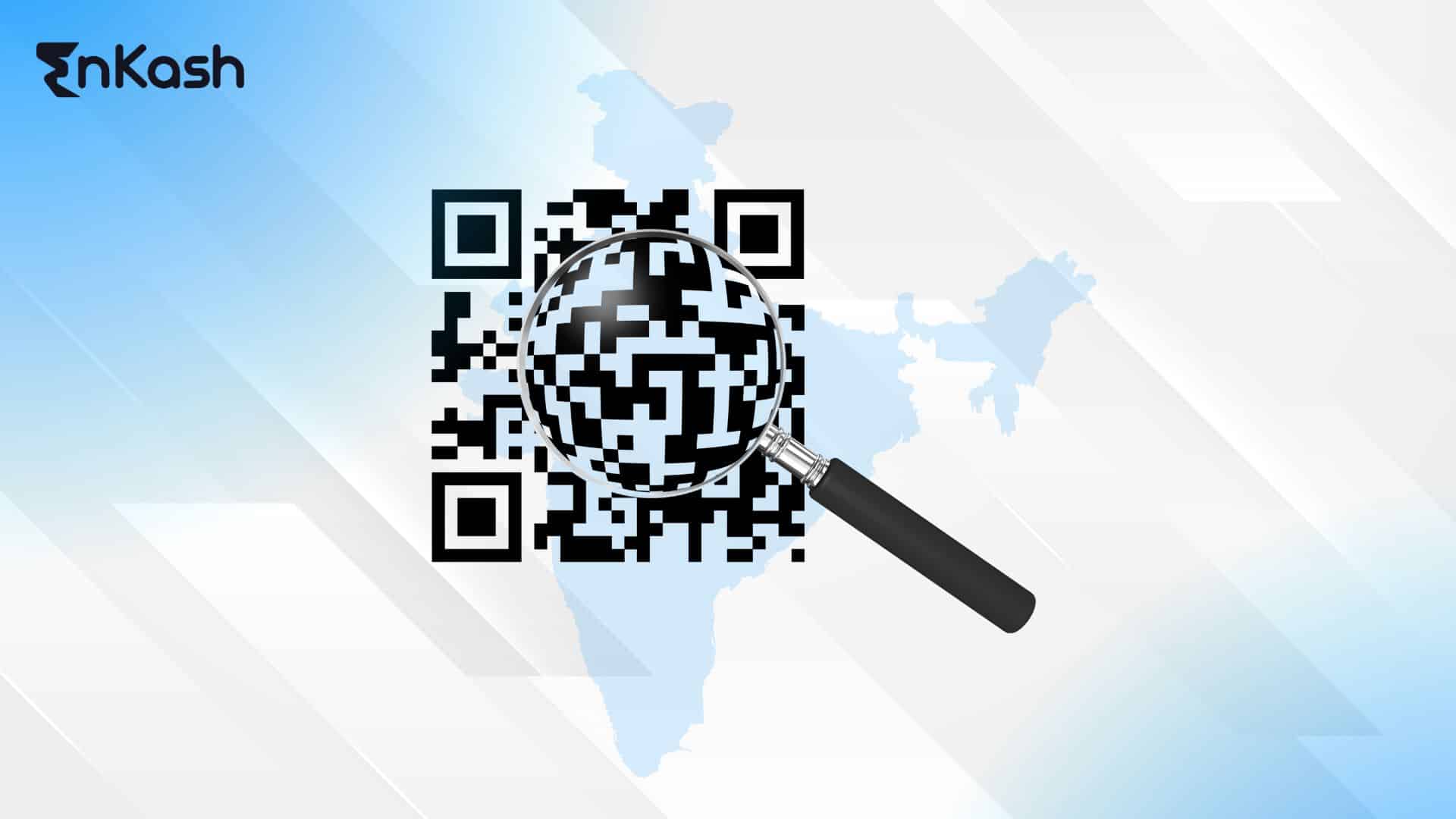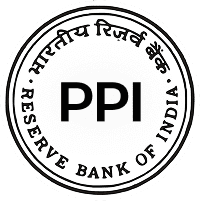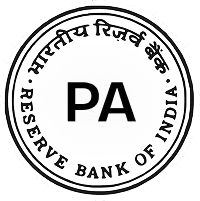Decoding Bharat QR: India’s Unified QR Code Revolution
India’s journey toward a cashless economy has gained serious momentum over the past few years. With smartphones in almost every pocket and digital payment apps becoming more common, the way people pay for things is changing fast. One of the key players driving this change is the Bharat QR code.
Before diving into its features, let’s step back and ask, what is qr code? A QR code, or Quick Response code, is a type of square-shaped barcode. It can store information that can be quickly scanned using a mobile phone camera. In simple terms, it connects the physical world to digital actions. In payments, this means you can pay someone or a business just by scanning a code on their counter or display.
Now, what is Bharat QR code and how is it different? It is a government-backed, unified payment solution launched by the National Payments Corporation of India (NPCI). Unlike QR codes specific to individual apps, Bharat QR operates across major card networks such as Visa, Mastercard, RuPay, and American Express. That means a single QR code can accept payments from multiple banking apps and cards without needing any extra device.
The goal was to fix a fragmented system where each wallet or app had its own code. With Bharat QR code, the payment process is streamlined. Whether you’re using a banking app, a mobile wallet, or a UPI platform, the QR remains the same. Simply scan, enter the amount, confirm the payment, and you’re done.
For customers, this eliminates the need to juggle multiple apps. For the merchant, it means they don’t need to maintain multiple QR prints or deal with different settlements. Everything flows directly into their bank account.
The Bharat QR code is designed to make digital payments smoother, safer, and more accessible. You don’t need a card. You don’t need a point-of-sale machine. You just need your phone. That’s the kind of simplicity that fuels mass adoption, especially in local shops, petrol pumps, cafes, and even roadside stalls.
How Bharat QR Code Transactions Actually Work
A Bharat QR code payment is designed to be simple and quick. Below is a clear, step-by-step explanation of how it works from both the customer and the merchant’s side.
For the Merchant:
- Open a merchant account with a bank or payment service provider that supports Bharat QR code.
- Generate a static or dynamic QR code linked to your business account.
- Print the QR code or display it digitally at the checkout counter.
For the Customer:
- Open a mobile banking or UPI app that supports Bharat QR code.
- Select the option to scan a QR code.
- Point the phone’s camera at the merchant’s QR display.
- The app reads the code and fetches the merchant details.
- Enter the amount to be paid, unless it is already filled in a dynamic QR.
- Choose the payment method (UPI, debit card, or credit card).
- Authorize the payment using your UPI PIN or card credentials.
- Receive a confirmation message once the payment is successful.
- The merchant also gets a real-time notification of the payment.
This process removes the need for PoS machines and allows anyone with a smartphone to accept payments securely and instantly. No card swiping, no waiting for receipts, and no handling of cash.
Transactions are settled directly into the merchant’s bank account, reducing delays and enhancing transparency. The Bharat QR code method works with many banks and apps, which means customers are not limited to one platform.
Also read: Enable Faster Collections with Payment Links
The Features That Set Bharat QR Code Apart
The Bharat QR code stands out from other digital payment methods because of its unique set of features. It’s not just a code you scan—it’s a fully integrated, bank-supported system designed for fast and secure transactions. Key differentiators include:
- Multi-platform compatibility
The Bharat QR code works across all major card networks—Visa, Mastercard, RuPay, and American Express. This means customers can use any banking or UPI-enabled app to make payments, without worrying about which network the merchant uses.
- Supports multiple payment types
Users can pay through debit cards, credit cards, or UPI-linked bank accounts. It gives flexibility without the need to carry physical cards or cash.
- No need to enter merchant details
Once scanned, the code fetches the merchant’s information instantly. This reduces the risk of errors and makes transactions faster.
- Real-time payment confirmation
Both the customer and the merchant get instant alerts once the payment goes through. There’s no confusion or need to check balances or slips.
- Cardless and contactless
There is no need to swipe a card or use PoS machines. The entire process happens through the customer’s mobile app and the merchant’s displayed code.
- Safe and secure
Since customers don’t have to share card numbers or personal banking details, the risk of fraud or data misuse is reduced.
Why Businesses Are Switching to Bharat QR for Smarter Transactions
Merchants across various sectors are adopting Bharat QR due to its numerous advantages beyond cost savings. It simplifies how payments are received, tracked, and settled—all without the technical headaches of older systems.
Key reasons for this shift include:
- No hardware required
Merchants don’t need to invest in bulky PoS machines or deal with their maintenance. A printed QR is all it takes to accept payments.
- Quick onboarding
Setting up a Bharat QR code is fast. Most banks and payment apps allow code generation in a few simple steps, with no long paperwork.
- Zero upfront cost
Unlike card terminals, there is no device fee or installation charge. This is ideal for small shops, kiosks, and vendors who need a budget-friendly solution.
- Direct bank settlements
Every payment made through the Bharat QR code is credited straight into the merchant’s account. This improves cash flow and reduces dependency on manual reconciliations.
- Use it anywhere
Merchants can accept payments on the go, at pop-up stalls, food trucks, or exhibitions—places where PoS machines are often impractical.
- Supports multiple payment modes
Customers can pay using UPI, debit cards, or credit cards, offering flexibility without the need for different QR codes or machines.
- Improves digital visibility
Accepting QR-based payments builds digital transaction records. This can help small businesses apply for loans or expand services in the future.
Enhancing Customer Experience Through Seamless QR Payments
Bharat QR offers convenience not only for merchants but also for customers. It transforms how customers interact with payments. By removing the need for cards or physical cash, it allows users to complete transactions in a few easy steps—all from their phones.
Here’s why customers increasingly prefer this method:
- Faster checkouts
Customers scan the code, confirm the payment, and leave. There’s no need to wait for card machines or enter lengthy details.
- No need for cards
Users don’t have to carry debit or credit cards. Payments can be completed with mobile banking or UPI apps that support the Bharat QR code.
- Reduced security risks
Since there’s no need to swipe cards or share CVV numbers, the chances of fraud or skimming are lower.
- Works across apps
The system supports a wide range of banking and UPI apps. This ensures that customers are not restricted to one platform, making the payment process more flexible.
- Instant confirmation
Once the transaction is complete, both the customer and merchant receive real-time notifications. This builds trust and reduces payment disputes.
- Safe for contactless interactions
Especially in settings like public transport, food delivery, or local markets, contactless payment adds comfort and hygiene.
Read more: How to File Wrong UPI Transactions Complaints
Step-by-Step Guide: How to Get Started with Bharat QR for Your Business
Getting started with the Bharat QR code is simple. Unlike traditional PoS machines, which require technical setup, electricity, and physical hardware, Bharat QR can be activated with just a smartphone and a bank account. Here’s a clear step-by-step guide to help merchants generate and start using it.
Step 1: Open a Business Account
- Visit your preferred bank or use its mobile app.
- Request to open a current account if you don’t have one already.
- Make sure your account is linked with a card network like Visa, RuPay, or Mastercard.
Step 2: Request QR Code Services
- Ask the bank or payment service provider to enable Bharat QR code acceptance.
- Some banks allow direct registration through online portals or merchant onboarding apps.
Step 3: Choose Between Static and Dynamic QR
- Static QR: Best for small businesses with fixed prices or walk-in customers.
- Dynamic QR: Ideal for stores using billing systems that can generate real-time codes with specific payment amounts.
Step 4: Generate the Code
- If using a bank app, select the QR option, then follow the prompts for how to generate Bharat QR code.
- Confirm your business details and link your settlement account.
- Download or print the QR code provided.
Step 5: Display the Code Prominently
- Laminate and place the printed code near the counter or entry point.
- Ensure it is easy to scan and well lit.
Step 6: Start Accepting Payments
- Inform your customers that you now accept payments through the Bharat QR code.
- Track payments using your banking or PSP app.
Understanding the Cost Structure Behind Bharat QR Implementation
A primary reason merchants adopt Bharat QR is its cost-effectiveness compared to traditional payment systems. Unlike PoS machines, which involve installation charges, hardware costs, and ongoing maintenance, Bharat QR offers a much simpler and cost-effective model.
Initial Setup
- There are usually no setup fees to generate or activate a Bharat QR code.
- Most banks and payment service providers issue the QR at no additional cost to merchants.
Transaction Charges
- Payments made through Bharat QR may attract a small Merchant Discount Rate (MDR).
- This charge depends on the bank and the type of transaction—UPI, debit card, or credit card.
- For small-ticket UPI transactions, MDR is often zero or minimal.
Hardware and Maintenance
- There’s no need for electricity, network cables, or printed slips.
- Since PoS machines are not required, businesses save on repairs, downtime, and consumables like paper rolls.
Hidden Fees
- Reputable banks and providers are transparent. Still, merchants should ask about any extra charges linked to settlements, notifications, or service access.
For small and medium businesses, this low-cost model is a major advantage. The ability to accept secure, verified payments without investing in machines or subscriptions makes the Bharat QR code a smart financial choice.
Read more: What is Billing? Different Types of Billing, Procedures and Process
Comparing Bharat QR with Other Digital Payment Solutions
India’s digital payment landscape has rapidly evolved, providing various options for customers and merchants alike. From wallets and UPI apps to traditional PoS machines, each method has its own use. However, the Bharat QR code offers a unique combination of flexibility, reach, and simplicity.
Here’s how it compares with other systems:
Bharat QR vs Wallet-Based QR Codes
- Wallet QR codes are often limited to users of that specific app.
- The Bharat QR code is interoperable and works with multiple bank and UPI apps.
- Wallets may require loading funds, while Bharat QR pulls money directly from bank accounts.
Bharat QR vs UPI Static QR
- UPI QR codes are linked only to UPI payments.
- The Bharat QR code accepts UPI, debit, and credit card payments from a single display.
Bharat QR vs PoS Machines
- PoS machines need electricity, regular maintenance, and physical swiping.
- Bharat QR requires no hardware, making it ideal for mobile vendors and small shops.
- Transaction settlements in Bharat QR are usually faster and more transparent.
Read more: How to Make UPI Payments
Key Challenges Slowing Down Bharat QR Adoption
Despite its benefits, Bharat QR code faces challenges in achieving widespread adoption. These challenges mostly relate to education, access, and ecosystem gaps.
Here are the most common roadblocks:
- Limited digital awareness
Many small merchants in rural or semi-urban areas still don’t fully understand how the Bharat QR code works or how it benefits their business.
- Dependence on smartphones
Using the code requires both the merchant and the customer to have a working smartphone with internet access.
- Slow onboarding by some banks
Smaller banks or local branches may not actively promote QR onboarding, delaying merchant access.
- Language and usability barriers
Not all apps supporting Bharat QR are easy to use for first-time digital users, especially in regional languages.
- Reluctance to move from PoS machines
Some businesses are hesitant to leave familiar systems like PoS machines, even if they cost more.
- Fear of tax visibility
Unregistered sellers worry that digital payments may expose their full income records.
The Future of Bharat QR in India’s Digital Growth Story
As India advances in digital transactions, Bharat QR is poised to play a significant role in shaping payment methods. With a clear focus on building an inclusive and cashless economy, several innovations are already being explored to expand its reach.
Here’s what the future may look like:
- Voice-enabled QR transactions
Integrating audio prompts will make QR payments more accessible for users who are visually impaired or digitally inexperienced.
- Offline QR payments
Features are being tested to allow small transactions even without an active internet connection.
- Wider government integration
The Bharat QR code could be used for public distribution systems, subsidies, and government-to-citizen benefit transfers.
- Adoption in Tier 3 and rural areas
Targeted campaigns will help expand QR use beyond cities and towns.
- Unified bill payment platforms
Bharat QR may be linked to utility, school fee, and transport systems for single-window payments.
Final Thoughts: The Simpler Way Forward for Digital Payments
Bharat QR has transformed digital payment processes for businesses and customers alike. Its simplicity, zero hardware dependency, and support for multiple payment methods make it one of the most practical solutions in India’s financial landscape.
For merchants, it eliminates the cost and complexity of PoS machines. For customers, it ensures secure, instant transactions without needing cards or cash. It bridges digital gaps and fits the diverse needs of small vendors, retailers, and service providers.
As India progresses towards a digital economy, Bharat QR stands out as a foundational solution for simpler, faster, and more inclusive payments.
FAQs
- Can the Bharat QR code be linked to multiple bank accounts for settlements?
No, each Bharat QR code is tied to a single bank account for settlements. However, merchants can generate separate QR codes for different accounts if they want to track income across branches or services. This setup allows better control over inflows for specific locations or teams. - What happens if a customer accidentally pays the wrong amount via Bharat QR code?
If a wrong amount is entered and paid, the merchant will need to initiate a refund through their banking app or manually transfer the excess amount back. Unlike card refunds on PoS machines, Bharat QR doesn’t auto-reverse payments, so clear communication between both parties is important. - Is it possible to track transaction history made via Bharat QR code?
Yes. Merchants and customers can view transaction history through their banking or UPI apps that support Bharat QR code. These records include payment amounts, dates, and payer/payee names, helping users maintain accurate financial logs without relying on printed receipts or terminal reports. - Can Bharat QR code be used for recurring payments like tuition or rent?
While the Bharat QR code is mainly used for one-time transactions, it can be reused by customers for recurring payments if the same static QR is shared. For automated deductions, other systems like UPI AutoPay may be more suitable, but Bharat QR supports repeated manual use. - How can businesses promote the use of Bharat QR code among customers?
Businesses can display QR codes prominently, educate customers on how to scan and pay, and offer small incentives for digital transactions. Printing instructions near the QR or training staff to assist first-time users can boost adoption, especially among those new to Bharat QR code payments.








